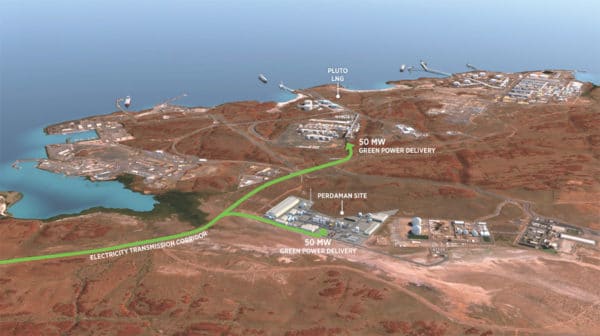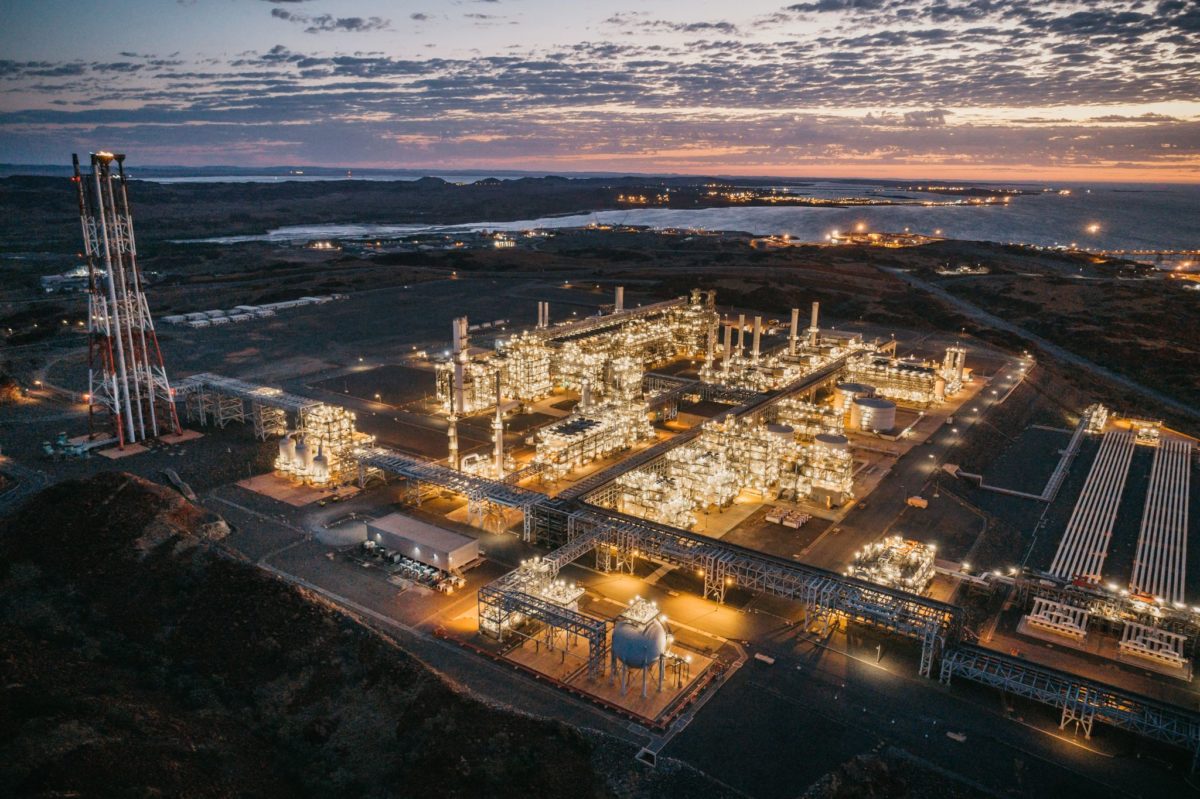Australian-based oil and gas producer Woodside has unveiled plans to build a utility scale solar PV facility near Karratha in the state’s north west, with 50 MW of solar to help power the Pluto LNG export facility and a further 50 MW to supply a proposed $4.5 billion urea project.
The company said the Woodside Power Project would be developed on the Burrup Peninsular and would comprise more than 210,000 solar panels, making it one of the largest solar projects in Western Australia.
While the project is only in its formative stages, Woodside said it has already completed environmental, geotechnical and engineering studies and is progressing key stakeholder consultations ahead of seeking regulatory approvals for the power project.
Woodside acting chief executive Meg O’Neill said the company was looking to capitalise on the region’s “world-class renewable energy resources” and the willingness of industry, government and other key stakeholders to co-operate on new energy opportunities.
“Woodside’s vision is for large-scale supply of renewable energy to existing and future industry on the Burrup Peninsula,” she said.
“We are lucky to have access to abundant natural resources, safe and reliable energy operations and both industry and government that are motivated to drive sustainable energy outcomes.”

Image: Woodside
As well as powering the Pluto LNG plant, the Woodside Power Project would supply 50 MW of solar PV power to the Karratha Urea Project being developed by the Western Australia-based Perdaman Group, which would also use gas from the Pluto venture.
“Our work with Perdaman is another demonstration of the important role the gas industry can play in driving the energy transition and achieving net zero emissions by 2050,” O’Neill said.
Perdaman estimates incorporating solar PV power would reduce the facility’s fuel gas consumption by about 50% while reducing emissions by at least 200,000 tonnes of CO2-equivalent per year, over 20 years. The initiative would also allow Perdaman to increase production of ammonia.
Perdaman chairman Vikas Rambal said the use of renewable energy is strategically in line with the company’s commitments to greenhouse gas management and carbon neutrality by 2050.
“This exciting initiative with Woodside will further enhance the manufacturing of blue ammonia for supply to the Asian market and help position Western Australia as a first mover in implementing renewable energy in a world-scale downstream industry,” he said.
“We look forward to working with Woodside on our shared objectives for a lower carbon future.”
The Woodside Power Project is the second renewable energy initiative the oil and gas producer has unveiled this month.
Woodside revealed last week it had signed a heads of agreement with Japanese companies IHI Corporation and Marubeni to investigate the production and export of green hydrogen produced from renewable hydro power in Tasmania.
They will explore using a small-scale hydrogen electrolysis plant to produce green hydrogen as feedstock for green ammonia export, with Woodside already involved in the proposed H2TAS project in Tasmania’s Bell Bay Advanced Manufacturing Zone, near Launceston.
While it is expected to initially be a 10 MW pilot project, producing 4.5 tonnes of green hydrogen per day, Woodside said the capacity of the proposed plant could eventually be scaled up to as much as 250 MW.

Image: Shell
Woodside’s solar PV announcement comes just days after oil and gas company Shell was ordered by a Dutch court to cut its greenhouse gas emissions.
In a ruling sure to have far-reaching effects, the court determined on Wednesday Royal Dutch Shell is liable for its contributions to climate change, finding the massive energy company’s ongoing fossil-fuel operations undermine basic guaranteed human rights.
The court ordered the company to act immediately to reduce those harms by slashing its global carbon-dioxide emissions by 45% by 2030.
The judgement is being seen as a landmark ruling that could trigger legal action against energy companies around the world.
This content is protected by copyright and may not be reused. If you want to cooperate with us and would like to reuse some of our content, please contact: editors@pv-magazine.com.









2 comments
By submitting this form you agree to pv magazine using your data for the purposes of publishing your comment.
Your personal data will only be disclosed or otherwise transmitted to third parties for the purposes of spam filtering or if this is necessary for technical maintenance of the website. Any other transfer to third parties will not take place unless this is justified on the basis of applicable data protection regulations or if pv magazine is legally obliged to do so.
You may revoke this consent at any time with effect for the future, in which case your personal data will be deleted immediately. Otherwise, your data will be deleted if pv magazine has processed your request or the purpose of data storage is fulfilled.
Further information on data privacy can be found in our Data Protection Policy.